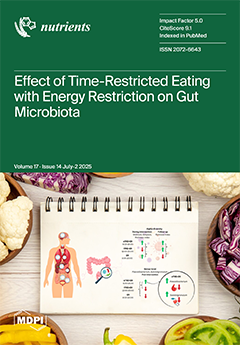Background: Metabolic syndrome (MetS) represents a significant global health challenge. Liupao tea (LPT), a post-fermented dark tea, has shown potential metabolic benefits, but clinical evidence remains limited.
Objectives: This study aimed to investigate the effects of LPT with varying aging durations
[...] Read more.
Background: Metabolic syndrome (MetS) represents a significant global health challenge. Liupao tea (LPT), a post-fermented dark tea, has shown potential metabolic benefits, but clinical evidence remains limited.
Objectives: This study aimed to investigate the effects of LPT with varying aging durations on clinical parameters, body composition and gut microbiota in individuals with MetS.
Methods: In a randomized, double-blind trial, patients with MetS were randomly assigned to intervention groups, receiving 6 g/day of LPT aged for 1, 4, 7, or 10 years, respectively, over a 90-day intervention period. Blood pressure, lipid and glucose levels, body weight, body composition, and gut microbiota were assessed at baseline and post-intervention.
Results: A total of 71 participants, with a mean age of 53.5 years, were included. At the final assessment, significant reductions in both systolic and diastolic blood pressure were observed in the 10-year-aged groups (
p < 0.05). In terms of lipid profiles, the 1-year-aged group showed a significant decrease in total cholesterol (TC), while low-density lipoprotein cholesterol (LDL-C) levels significantly decreased in the 1-, 4-, 7-, and 10-year-aged groups (
p < 0.05). All intervention groups showed significant reductions in body weight, body fat mass (BFM), along with an increase in muscle mass (MM) (
p < 0.05). A decrease in the Firmicutes/Bacteroides (F/B) ratio was observed in the 10-year-aged group. No significant differences in clinical parameters or body composition regulation were observed between groups with varying aging durations (
p > 0.05).
Conclusions: LPT intervention effectively improves metabolic health and modulates gut microbiota in MetS patients, irrespective of aging duration. These findings support LPT as a functional beverage for the management of MetS.
Full article






